Let’s take a few moments to consider the basic movements that we do every day. We carry objects, we squat down to retrieve something from a low surface, we pull open a door or pull clothes out of the washer, we push ourselves up from the floor, we reach for something on a high shelf – possibly all in the same hour!
These very movements can be replicated in our exercise programs to create highly functional and practical routines that are safe for people with osteoporosis – no fancy or expensive equipment necessary. Canadian kinesiologist Dr. Lora Giangregorio addresses many of these concepts beautifully in her research (1) and in the program Too Fit to Fracture (2) which she helped to create.
Here are some examples of how we can pair exercise with function:
Carrying exercises work the whole body, particularly the core muscles. Examples of exercises that strengthen the core are bird dog, plank, and toe dips.
Bird dog:
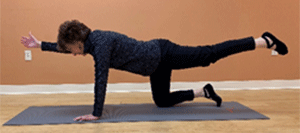
Plank:

Toe dips:
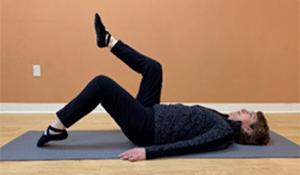
Plank can be modified by being on knees/lower legs in order to avoid bending the toes.
Squats strengthen the legs, particularly the thighs and glutes. Body weight squats, weighted squats (squatting while holding a dumbbell), repeated sit to stand exercise (without hand assist) and getting up and down from the floor are all good examples.
Body Weight Squat
(while lifting an imaginary object):
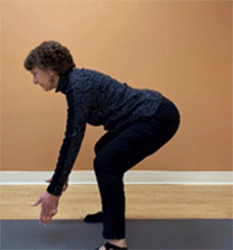
Sit to Stand
(no hands):
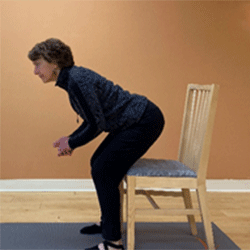
Always make sure the chair is stable and will not slide or tip away.
Pulling exercises strengthen the upper back and shoulders. Good examples are the bent over dumbbell row (one or both arms), or the standing row using a resistance band.
Single Arm Bent Over Row:
Bent Over Row with Both Arms (showing starting position and ending position):
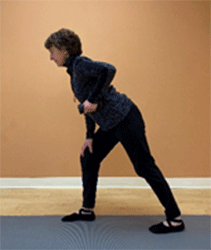
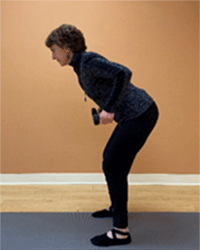
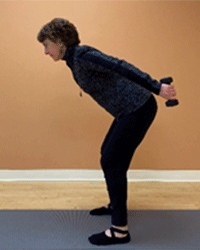
Pushing exercises strengthen the arms, chest, and back. Examples are the press up (in a face down position) or a standing wall “push-up”.
Press up:
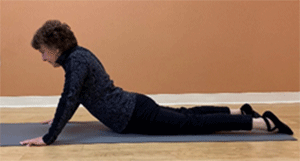
Keep in mind that the elbows do not need to straighten as much as is shown. It’s the act of pushing into the floor that matters.
Reaching exercises focus on shoulder mobility as well as arm, upper back, and core strength. Reaching the arms out to the sides and as far as overhead as possible, or standing side bends with a weight held overhead are some examples.
Arm Reach out to Sides (showing starting position and ending position)
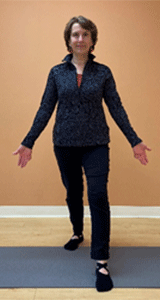
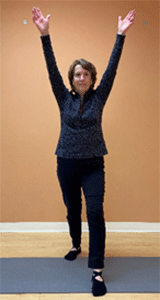
The arm reach here is done in a static lunge position which adds to the challenge.
Side Bend with Weight Held Overhead
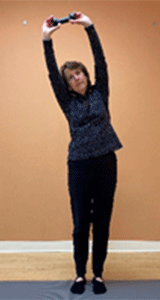
It’s important not to bend too far to the side.
I’m happy to say that these exercises, which benefit many functional movements, are exactly what we’ve been doing all along in our Strong Bones class. We routinely do most of the exercises described here which improve our skeletal health as well as our balance and postural alignment.
The Strong Bones class “rule”:
The most important thing of all is that for every exercise or activity, we must acknowledge our current level of fitness and meet ourselves where we are. Tailoring a particular exercise to meet our needs is essential to avoid possible injury, and as always, body awareness is key.
We focus on form first and foremost and build from there; it’s important to increase the amount of resistance and number of repetitions when ready. Being attentive and honestly listening to the feedback we get from our bodies will not only help us to get strong and stay strong, but will also result in improved performance of our everyday activities.
See you in Strong Bones class!
References
- Giangregorio LM, et al. Too Fit To Fracture: Outcomes of a Delphi Consensus Process on Physical Activity and Exercise Recommendations for Adults with Osteoporosis With or Without Vertebral Fractures. Osteoporos Int. 2015 Mar;26(3):891-910. doi: 10.1007/s00198-014-2881-4. Epub 2014 Dec 16. PMID: 25510579; PMCID: PMC5101068.
- https://osteoporosis.ca/exercise-recommendations/

